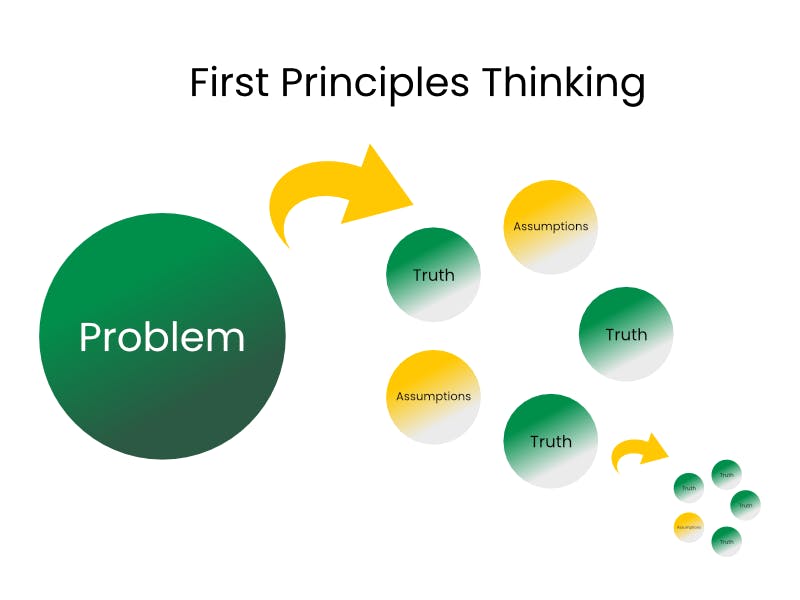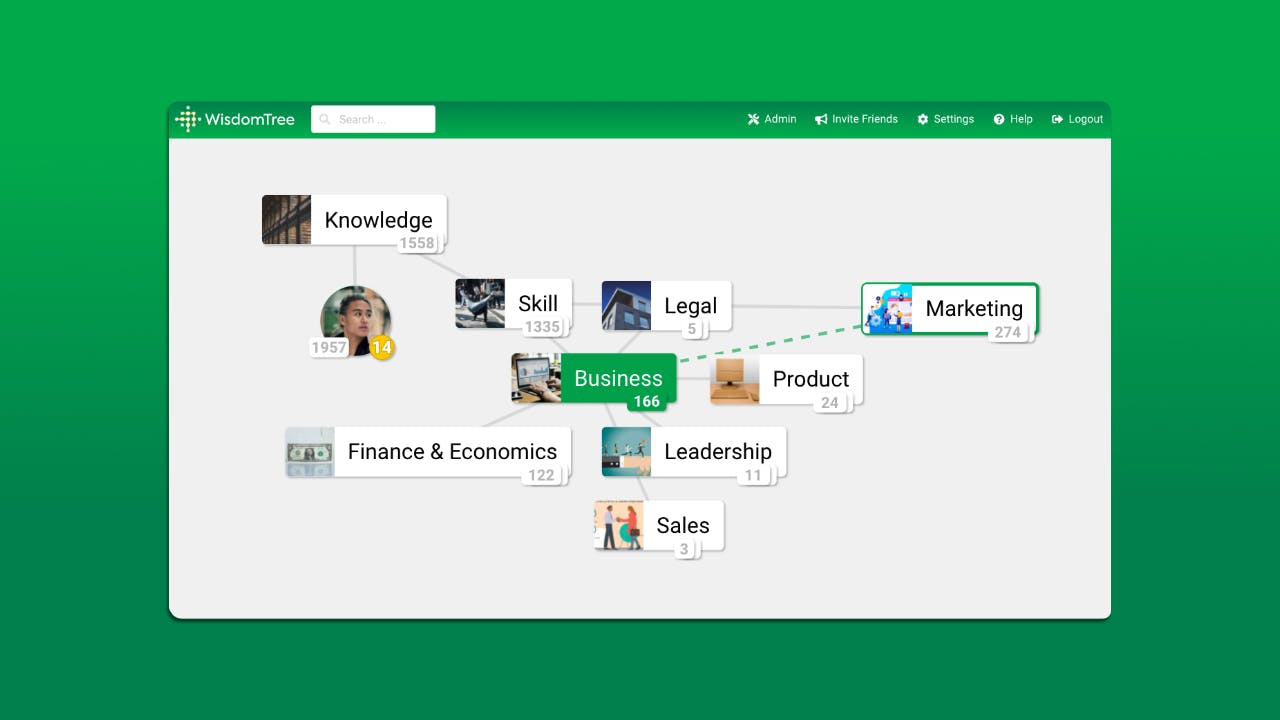Improve Your Thinking with Mental Models
We’ve all had them. Moments facing a problem not knowing the next steps to understand the issue, or how to solve it. Leaving us scratching our heads, or just desperately started “doing something” hoping that things work out.
We all deal with these problems continuously in various degrees throughout our lives. It can be a new task at work, or a confusing social situation with friends, or it can just be a simple theory you need to understand when learning something new. We lose so much time and go through unnecessary frustration only because we can’t think more efficiently.
Nonetheless, when faced with these uncertainties of not knowing what to do next, there’s a cognitive medicine to that paralysis. And the name of that medicine is called mental models.
In this blogpost I’ll be covering:
- What is a Mental Model?
- 5 favorites for learning, thinking & decision making
- How to apply mental models to your everyday life
So that after reading this post, you can start to supercharge your thought process to: think efficiently, and improve your problems solving skills.
What is a Mental Model?

A mental model is a way of thinking that simplifies complex matters into simple ones. Which improves your understanding and reasoning around a specific matter.
In Gabriel Weinberg's book “Super Thinking: The Big Book of Mental Models'' he gives a good analogy comparing normal thinking to mental models. Normal thinking is like addition in math. If you want to reach 100 and use multiple additions of 1’s, the thought process of getting there will be tedious. If you, however, use multiplication i.e a “mental model” in this case, enables an efficient thought process that shortcuts your thinking to reach 100 quicker.
“1+1+1….+1+1 = 100”
“2x50 = 100”
Mental models can be seen as how you view the world. It represents your thought patterns involving perceived connections, behaviors, risks, and opportunities. Hence, the quality of your thinking is directly connected to the mental models you have in your head and your proficiency in memorizing and applying them.
“We call these broadly useful mental models, supermodels because applying them regularly gives you a superpower: super thinking—the ability to think better about the world—which you can use to your advantage to make better decisions, both personally and professionally”

Gabriel Weinberg - Super Thinking: The Big Book of Mental Models
Mental models are simply put concepts, methods, and techniques from various schools of knowledge that can be applied to everyday situations - that helps you think more efficiently.
By thinking with mental models, you can enhance your learning, problem-solving, and decision-making.
5 Mental Models to Help You Think & Learn Better
1. First Principles Thinking
“With first principles, you boil things down to the most fundamental truths…and then reason up from there.”

Elon Musk
This mental model is a great way to be able to understand a complicated problem or situation and be most creative when solving it. Thinking with first principles means to reverse engineer problems by separating them into their underlying ideas, facts, or assumptions.

From there reason towards a solution by asking critical questions to build an understanding from the ground up. Your thoughts will then be based on the problems most fundamental elements, ensuring that the quality of the solutions you think of from here, comes from indisputable facts.
Techtello has written a comprehensive elaboration on how to think from first principles in greater detail.
In essence, next time you’re faced with a complicated problem, map out the building blocks of the issue into its most basic assumptions and fundamental truths. Answer the questions:
- What are the fundamental components of this issue?
- What are assumptions?
- What are truths?
From there, gain your understanding. It’s far better to think of solutions when you’ve reached a principle and basic understanding of the matter.
Mind Mapping is a great aid to utilize when reasoning from first principles. The visual aspects help you see and draw connections between the fundamental aspects and improve your understanding of the matter.
2. Design Patterns & Anti Patterns

These are two mental models that serve the same purpose: to help you find a solution. Design patterns are the best-proven solutions to a given problem, and anti-patterns are “solutions” that are non-obvious detours.
Design patterns is a mental model that comes from the school of architecture, described by the British-American architect Christopher Alex in his book “A Pattern Language”. It is the best practice of solving a problem, based on what works and what doesn’t derived from the specific fields leaders and experts i.e. Solutions that have been used with success by industry veterans.
Anti-Patterns are the opposite of design patterns. Anti-Patterns are seemingly intuitive solutions but in real life are inept. It will make you feel like it will solve your problem, but in truth is an ineffective way of doing so.
When faced with a challenge or problem you have not dealt with before, which you want to solve effectively, learn from people who have done it successfully first. No need to reinvent the wheel.
3. Brute Force Solution

A brute force solution is a solution to a problem that requires minimal to no intellectual effort. Brute force solutions are most effective for small-scale problems with one or several of these elements:
- Non- recurring (one-off problem)
- Quality threshold minimal
- Low quantity/frequency
A good example would be if you need to send 200 emails, and you don’t want to pay for a mass-email service nor use the BCC function (This just happened to me, no joke). A brute force solution here would be to just do it, sending those emails manually one by one.
Brute force solutions become sub-optimal when the problem becomes reoccurring, and if continued to use will either yield a greater cost of time or resources. Here a more sophisticated solution, which takes into account your time, output, and value would be best suited.
Question if the problem you’re solving needs a well thought out sophisticated solution. Will you actually gain something planning it out? Because sometimes, just doing it is the best way.
4. Reversible & Irreversible Decisions

Making important decisions effectively is hard. There are two opposing forces constantly at play; making them quickly to stay efficient, but also gathering enough information to be sure the right choice was made. One way to deal with this is by thinking of the decision's reversibility; how hard it is to unwind from taking that decision.
Some decisions are consequential and irreversible or nearly irreversible—one-way doors—and these decisions must be made methodically, carefully, slowly, with great deliberation and consultation.

Jeff Bezos
Taking reversibility into account helps you understand how much time you need to spend on evaluating a decision, helping you to prioritize the substantial amount of decisions you need to make throughout your life.
Reversible decisions such as what new phone you’re going to buy should preferably be given less time contemplating. As there’s an opportunity to return the phone, and unwinding the decision has little to no consequence.
However, Irreversible decisions, such as who you should marry should be given adequate time to make, as there are inherent risks and consequences when the decision has been made.
By understanding the decision’s reversibility, you can gauge how much time you should take evaluating it.
5. Opportunity Cost
A mental model from microeconomic theory, where opportunity cost is the benefits lost if the best alternative choice would have been chosen. When you are at a crossroads (sometimes with multiple roads to take) it's wise to pin the choices against each other to understand what benefits you would lose, if you choose one over the other. By logical rule, you want to choose the one with the lowest “opportunity cost”.
Here’s a good example. You’re choosing between two universities, and now comparing their benefits in regards to what will help you progress after graduation:
- The opportunity of University 1: Great University reputation.
- The opportunity of University 2: Great alumni network community
The opportunity cost for taking university 1, is losing an amazing network. Vice versa for university 2. Both opportunities will help you excel in life after school, but what cost are you willing to pay? What cost in relation to your requirements is the lowest?
When evaluating opportunity cost, if possible, find a common denominator such as time or money to make the situations comparable.
Applying Mental Models
Learning how to apply mental models, and in what situations is best achieved through simple practice. But to even start practicing, you must remember they exist. You can’t practice something you cannot recall. The mental models have to be top of mind.
What helps is to have a place where you can store all your mental models in such a way that is memorable. Any note-taking app will do, but not all are made equal to improve your memorization. This is where WisdomTree excels.
In my blog post “How your memory works and how to improve it” I detail how spatial and visual memory cues are our strongest memory types. And this is what WisdomTree is optimized to take advantage of.

Above you see my categorial nodes, where I have collected key:
- Ideas, concepts, theories, quotes, and yes mental models. Which I find especially applicable to each category.
I’ll be covering in a future blog post the structure of my WisdomTree i.e. my 2nd brain. But the lesson is, that by having mental models top of mind: you will be drawing connections to situations and problems in which they can be applied.
The first step to applying a mental model is to remember them. By having them on top of your mind, you will see when it could be applied. And when you do, supercharge your thinking.
Summary
- A mental model is a thought-out concept from various schools, that if applied correctly to your own reasoning can help you think and learn more efficiently.
- First Principles Thinking is about boiling down a problem to its essential building blocks and from there reason to a solution.
- Design Patterns are solutions proven by its industry experts. Anti-Patterns are seemingly intuitive solutions that are inefficient.
- Brute Force Solutions are the best solutions for non-repeating tasks, as they will get things done.
- Assessing a decision's reversibility & irreversibility will help you understand how much time you need to take the decision.
- Opportunity cost helps you understand what benefits you lose in any given choice that needs to be made.
- Memorize the mental models, to have the chance to apply them.


